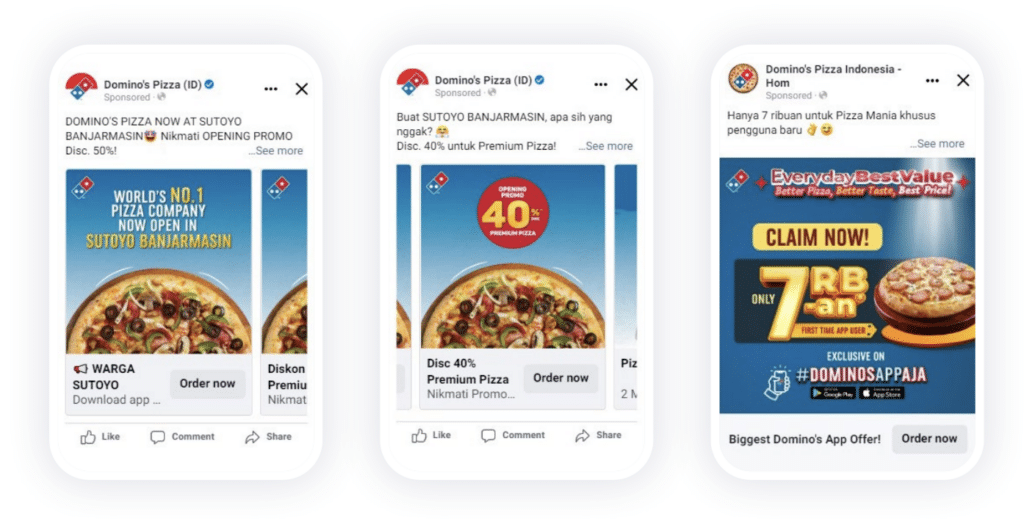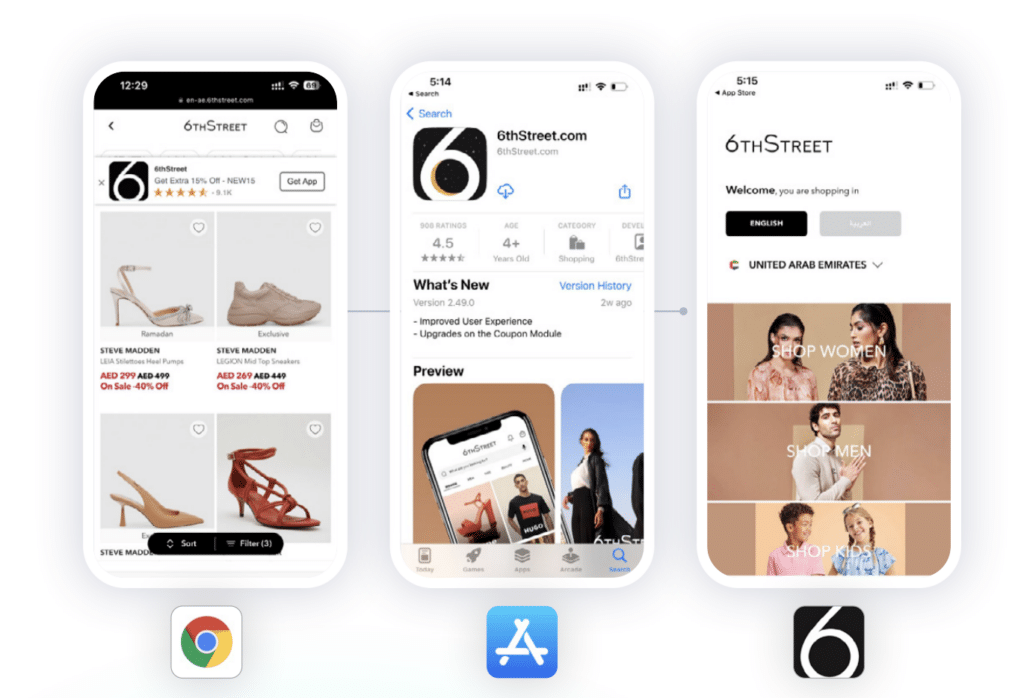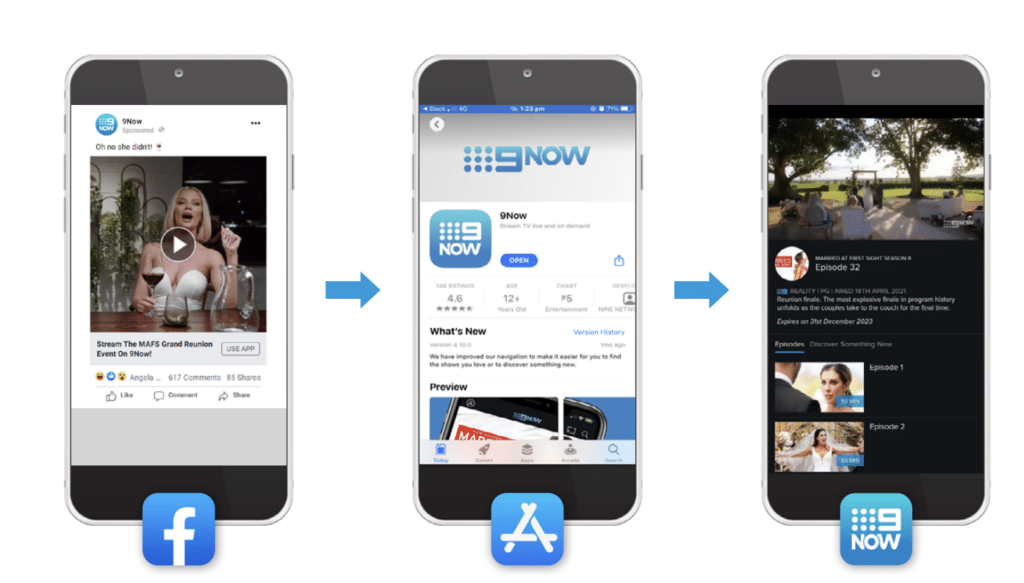In the ever-changing landscape of mobile marketing, the impending demise of first-party user identifiers, such as third-party cookies and device IDs, has sparked concerns among marketers worldwide. These identifiers have long been a cornerstone of targeted advertising, enabling personalized campaigns and precise audience segmentation.
The gradual disappearance of third-party identifiers stems from a growing demand for enhanced user privacy. As users become more aware of the data they share and the need for control over their online experiences, regulators and technology companies have responded with stricter privacy regulations and browser restrictions — like Apple’s SKAdNetwork. While this might limit the usage of conventional user identifiers, it opens up opportunities for mobile marketers to adopt new strategies and reach users in more privacy-conscious ways.
This shift raises the question: Should mobile marketers abandon paid advertising altogether? There’s a reason why “don’t give up on advertising” was the #1 don’t in our blog: Mobile in 2023: What to Do and What Not to Do. The answer lies in recognizing the continued value and potential of paid advertising even without traditional user identifiers.
Here are 10 tactics to try in the era of privacy-centric measurement.
-
- Leverage contextual targeting
- Build better relationships to foster opt-ins
- Experiment with web-based ads
- Embrace first-party data and data partnerships
- Rely on performance tracking and optimization
- Ramp up cross-channel marketing
- Rethink ad formats and creative
- Try deep links in product feeds
- Tap into OTT/CTV streaming ads
- Focus on ROI beyond CPI and ROAS
Leverage contextual targeting
With the decline of user identifiers, contextual targeting emerges as a powerful alternative. By focusing on the content users engage with, marketers can align advertisements with relevant and timely contexts. Leveraging contextual signals such as keywords, page topics, and user behavior, mobile marketers can deliver ads that resonate with users’ immediate intents and interests. This approach respects user privacy while still providing opportunities for effective advertising and engagement.
Marketers can use parameters like demographics, interests, behavior patterns, and location to hone in on specific user segments. For instance, by partnering with Branch to target specific geographies, Domino’s Indonesia reduced their cost per reach (CPR) by half and maintained a strong range of 10% to 20% CPR. They also had clear visibility into each of their marketing channels, which allowed them to analyze high-performing platforms and double down on those to maintain the desired CPR.
By refining their targeting strategies, mobile marketers can still deliver personalized and relevant ads to their intended audience, albeit through alternative means.
Build better relationships to foster opt-ins
The transition away from user identifiers emphasizes the importance of quality over quantity in mobile marketing. Rather than relying on broad, blanket targeting, marketers can pivot toward building strong relationships with users through opt-ins and permission-based advertising.
By creating better mobile experiences and engaging with users who willingly share their preferences and interests, mobile marketers can cultivate meaningful connections, leading to higher-quality interactions and conversions.
Experiment with web-based ads
Since Apple’s App Tracking Transparency (ATT) framework can substantially impact ad spend effectiveness and overall acquisition strategy, mobile web-based ads might be a great alternative. Take 6thStreet’s experience. With 75% of 6thStreet’s app traffic on iOS, they noticed app install campaigns in self-attributing networks (SANs) contributed to less engaged app users at a higher cost than before ATT.
The performance marketing team decided to switch from app install ads to web-based ads with ad networks such as Meta, Google Ads, and TikTok. This allowed them to redirect traffic from the ads to their website instead of the app stores. Then, the team used Branch Journeys smart banners to target web visitors coming from these ad networks. They offered these web visitors discounts for in-app orders, which prompted them to install the 6thStreet app.
Branch Journeys enabled 6thStreet to bridge the gap between their web and app with personalized messaging, design variations, and sales offers. By personalizing the user experience with Journeys, 6thStreet increased click-through rates 6x compared to standard web banners.
Embrace first-party data and data partnerships
While third-party cookies and device IDs might be on their way out, the value of first-party data remains intact. Mobile marketers can prioritize gathering and utilizing their own data to better understand their users and deliver personalized experiences. Marketers can gain valuable insights and improve targeting strategies by leveraging data captured directly from their apps or websites and partnering with mobile measurement platforms (MMP).
Rely on performance tracking and optimization
Paid advertising offers robust measurement and optimization capabilities that can help mobile marketers gauge the success of their campaigns. While the removal of traditional identifiers may impact certain tracking metrics, modern advertising platforms are evolving to provide alternative solutions. Marketers can leverage ad attribution and mobile analytics tools to gather insights into campaign performance, user engagement, and conversion rates. This data-driven approach enables marketers to optimize their campaigns in real-time, making data-backed decisions that drive better results and ROI.
A great example of performance tracking and optimization is Tonsser, Europe’s most popular social network for youth footballers. By getting more granular and automated targeting options from Branch’s mobile measurement capabilities, Tonsser lowered their cost per install (CPI) by over 15% in the first two weeks of their revised user acquisition campaign on Snapchat, increased ad engagement on Snapchat by 1.5x, and generated a corresponding increase in in-app actions.
Ramp up cross-channel marketing
In a post-ID world, the importance of cross-channel marketing becomes even more pronounced. Paid advertising provides an avenue for mobile marketers to integrate their campaigns seamlessly across different channels and touchpoints. With this type of holistic approach, marketers can leverage the strengths of various platforms and channels, such as social media, search, display, email marketing, and influencer collaborations. This cohesive strategy ensures consistent messaging and maximizes the chances of reaching and engaging users across multiple touchpoints.
Rethink ad formats and creative
Paid advertising has always been about capturing attention and engaging users, and this principle remains true even without user identifiers. Mobile marketers can focus on developing captivating ad formats and creative content that resonates with their target audience.
Innovations such as interactive ads, immersive experiences, and influencer partnerships provide avenues for brand storytelling and user engagement, irrespective of targeting methods.
Try deep links in product feeds
We have a whole blog about how to use Branch links in product feeds, but deep links can also take users from a product listing ad directly to product pages in an app. When product ads link users directly to your app, where they go through the checkout process, Branch can attribute these conversions back to the original campaign. Plus, you get your products right in front of consumers who are searching for a specific product — at the time of the search.
Mobile marketers can increase visibility and target high-intent customers, resulting in more conversions and higher sales volume.
Tap into OTT/CTV streaming ads
Streaming is a great opportunity for marketers to reach new users and prompt them with enticing offers so they download a mobile app.
Marketers have been reluctant to advertise on over-the-top (OTT) and connected TVs (CTV) because of a lack of visibility into the ROI of ad spends, but an MMP can solve this challenge. For example, Universal Ads by Branch provides an unbiased measurement of paid ad spends and gives marketers a granular view of down-funnel events deduplicated and combined across platforms, conversions compared by ad network, and consumer trends broken down by platform, channel, ad set name, and more.
Because Branch is integrated with over 2,000 ad partners globally, marketers can also test new channels and platforms to understand what drives mobile app installs. 9Now, Australia’s largest locally-owned media company, used Branch’s Universal Ads to run advertising experiments, which boosted the number of video streams and minutes watched, saved 140% per conversion, and increased app installs by 35%.
Want to start investing in streaming ads? Check out our blog: How to Run and Measure Ads on Connected TVs.
Focus on ROI beyond CPI and ROAS
Often, businesses use CPI or return on ad spend (ROAS) as the measures of an app download’s value. But some install advantages are often overlooked. Companies save money when customers use the app for support or customer service. In addition, apps help breed brand loyalty and provide the ability for referral virality. Taking all of this into account, app users are extremely valuable. In our recent Mobile Growth survey, we found that for every one dollar a non-app user spends, respondents reported that, on average, app users spend $3.30 — more than three times as much.
So when mobile marketers are thinking about doubling down on ROI, sometimes it’s more about cost savings and incremental revenue than it is about ad spend.
By embracing these changes and adopting privacy-conscious practices, mobile marketers can continue to reach their target audience effectively while respecting user privacy. Ultimately, this drives meaningful engagement, more conversations, and faster mobile growth.
Ready to make your paid campaigns count? Request a demo.



























